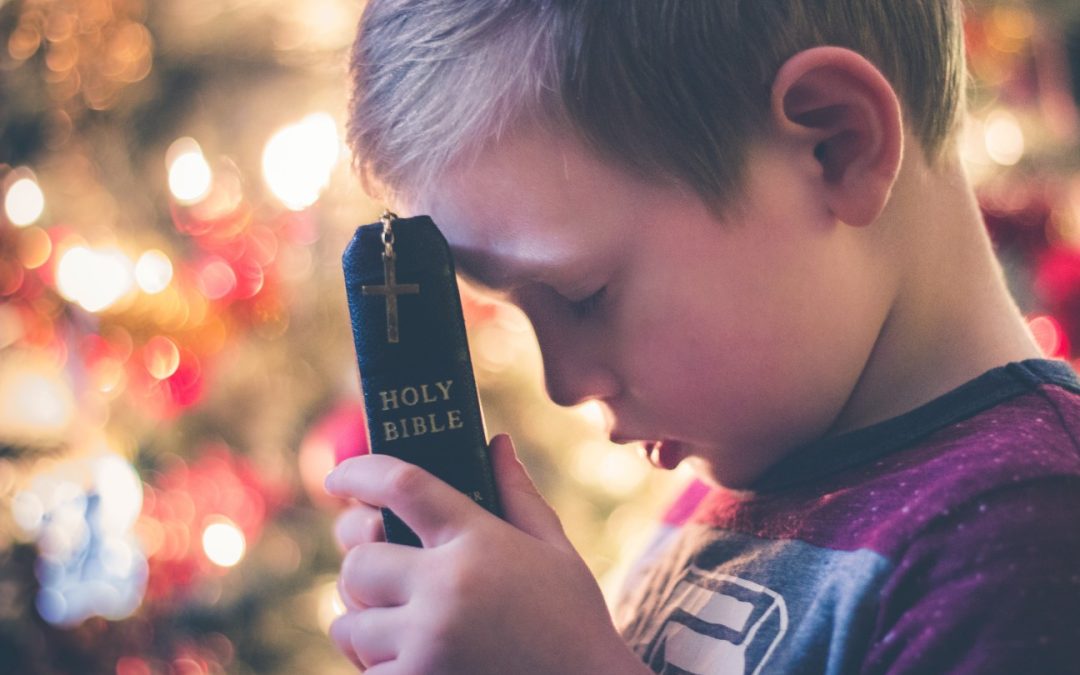Photo by David Beale on Unsplash
Christians understand the immense power of prayer, but this concept may not be something children can easily comprehend and practice.
With the numerous obstacles and challenges the world holds, there will be instances when people struggle to survive. It’s easy to feel weak and powerless in the face of difficulties. But as people are wired for survival, they will do everything in their remaining strength to grapple with their circumstances and rise back to the surface.
However, there will be situations where things will be too much for them to handle alone. In these cases, they have nobody else to call or anything else to tap into but the power of prayer and God’s help. When people feel as though they do nothing and can’t do anything to overcome what’s blocking their way, they always have God to call for strength. This understanding of His assistance isn’t anything new.
His undying support and strength are among the best presents He has for humankind. And these can be gained through prayer, calling out to Him for help. It brings people closer to Him by communicating their needs like any child would do with their parents.
However, when it comes to prayers, children may need help comprehending their importance.
The Power of Prayer Through the Child’s Lens
In Rockabye Jesus, a religious children’s book, author Teresa Haven Pelinski writes about the power of prayer from the children’s perspective. Through a more simplistic and animated approach, she conveys how praying is people’s only communication with God. It bridges their earthly lives and needs with God’s divine will and plans. This makes it an essential link that helps enhance their lives.
However, while prayer is crucial, it isn’t something they enjoy doing or pay attention to.
In their young age, children may only gravitate towards pleasure and enjoyment. They build their routines around activities that make them happy and those they’re heartened to follow. Between these, praying falls more under the latter category. Unless they’re told to do so, children may fail to pray. They may even be ignorant of the concept until they’ve been taught about it.
Not to mention, once they’re introduced to this concept, they aren’t even made to understand why they’re doing it. Prayer to them is simply part of their routine. It’s what they have to do before every task they undertake. Such an approach doesn’t leave any impact nor weight of significance in their minds. Instead, they should be educated that prayer is the only means to connect with God.
Similar to how they ask Santa for gifts on Christmas, praying is a meaningful way for them to ask for presents. Beyond materialistic ones, which should be set aside for Santa, God gives them traits that will help them face problems. Children have the purest souls. They naturally tend to offer help to those in need and praying can equip them with the strength and capacity to do so. This can be one way of persuading them to tap into the power of prayer.
Teaching Children to Pray for What Their Hearts Want
Christians are taught that praying should be similar to breathing, such that it should be natural and not something people should be reminded to do. Children learn by modeling, and most importantly, things can easily pass their minds unless they’re actively reminded about them.
So, how can they successfully learn to engrave prayer into their lives naturally?
Modeling is never wrong. When children learn to pray by mirroring their elderly, this doesn’t make their prayers less genuine or weaker. Instead, mirroring will teach them the importance of communicating with God. It encourages them that if adults do it, they should, too. Adults can guide their naïve souls on how to start and end their prayers and what their words should carry.
However, breaking the process down to finer, more specific details can cause more confusion. How should they be taught?
Praying Is Talking to God
The easiest way to let children understand the power of prayer is by associating it with something mundane like talking. Praying shouldn’t be an added task. Instead, it should be something they can do regularly and with ease. Hence, adults should encourage children to pray by reminding them that it’s similar to conversing with God.
Prayers don’t have any unique formula to follow. Instead, it’s more effective if it comes from a vulnerable space, an intimate expression of one’s needs and desires. Unlike other communication tools, it doesn’t have a specific ingredient to be deemed effective. It must only be a genuine reflection of one’s heart desires.
Children may need help doing something new and completely foreign from their routines. In this case, they can start with existing prayers to familiarize and recite. They can begin to visualize and comprehend the power of prayer by practicing these string of words first. Adults should also be with them throughout the process and help them understand what the text conveys and when it should be recited. However, teaching them to familiarize themselves with these should only add to the intimate and genuine conversation.
- Top 10 Best Bedtime Stories for Newborns: Book Recs to Read! - November 26, 2024
- From the Sky to Ground: A Children’s Guide About the Rain - October 29, 2024
- How to Teach Children About the Weather: Easy Tips for Parents and Teachers - October 29, 2024


Recent Comments